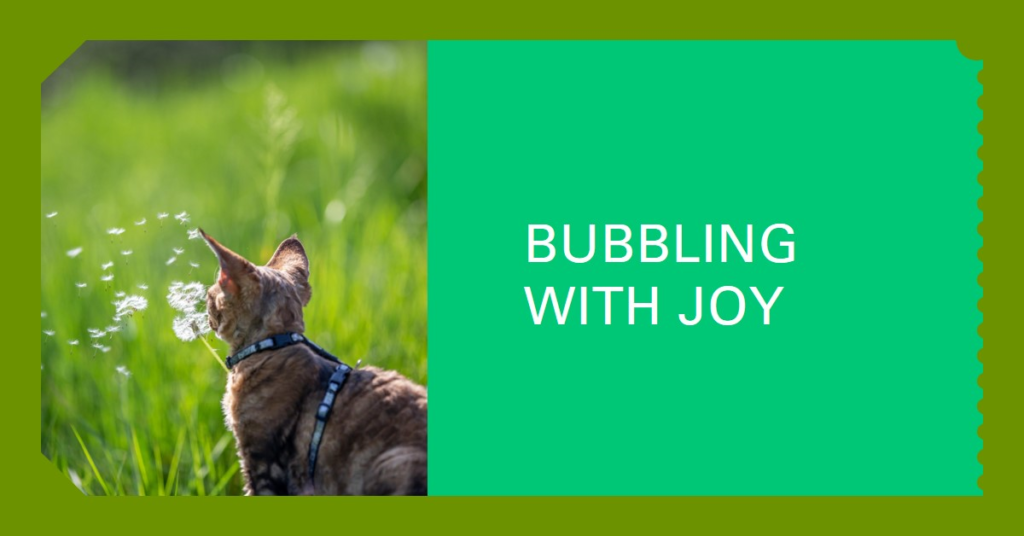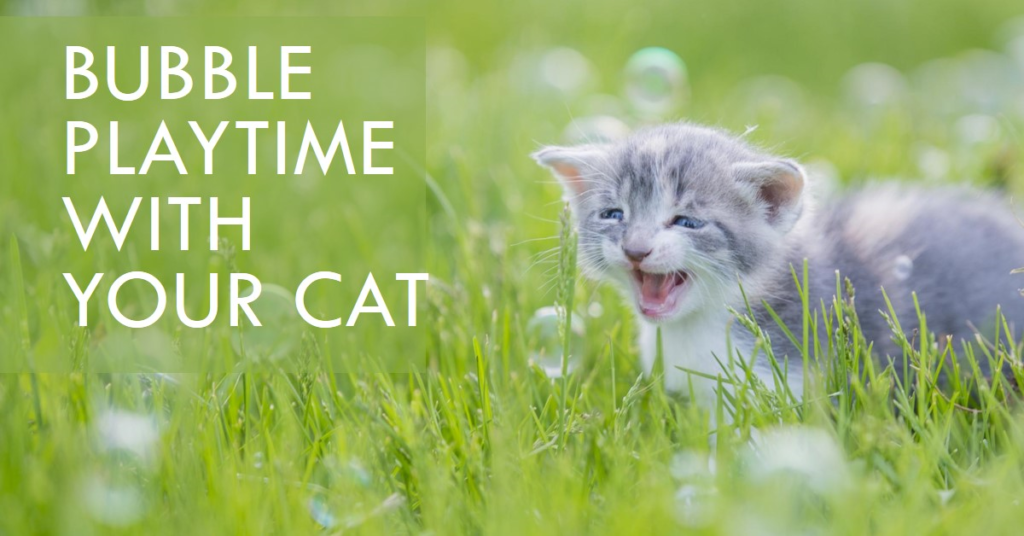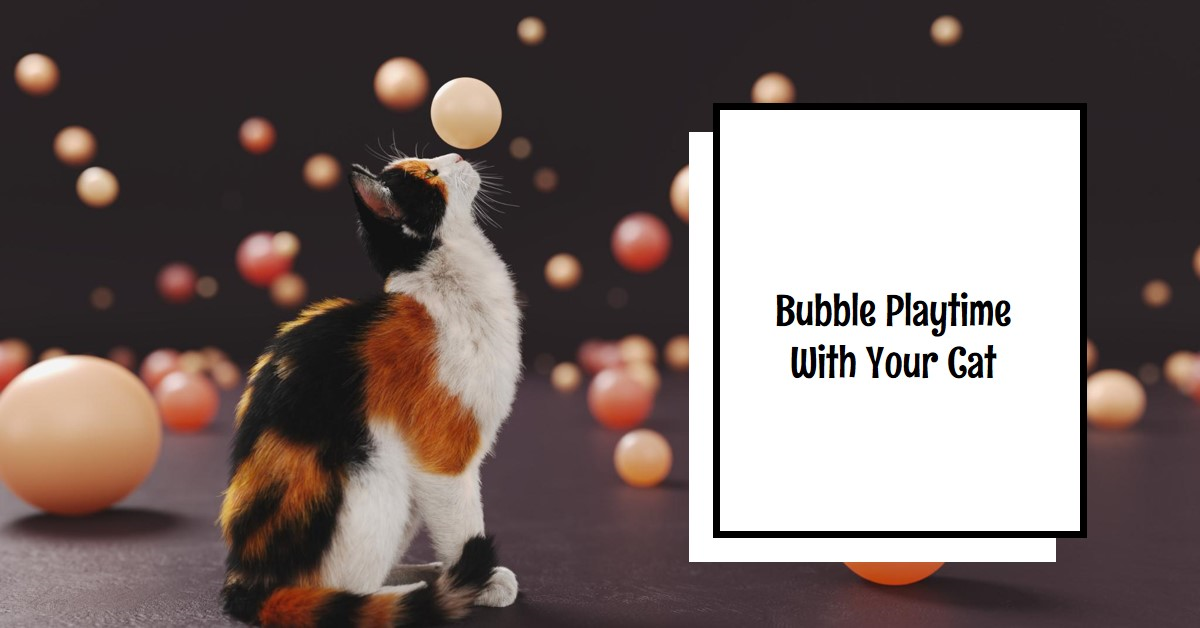Cats are curious and often attracted to shiny and moving objects like bubbles. Cats’ natural curiosity makes bubbles an entertaining toy for some felines. However, it is important to understand if bubble play poses any risks before engaging with your cat. Many cat owners wonder if playing with bubbles is safe for their furry feline friends. While bubbles may seem harmless, it is important to understand if they pose any risks to a cat’s health or safety. In this article, we will look at are bubbles safe for cats and provide tips to ensure bubble playtime remains safe and fun.
What are bubbles made of?
Bubbles are spherical soap films floating in the air. They are usually made with water, glycerin, dishwashing liquid, and other compounds that allow the film to stretch without breaking. The soapy solution forms a thin membrane held together by surface tension. When blown from a wand, the circular films drift through the air, entertaining many kids and cats alike. While the ingredients in bubble solution are not generally toxic, some cats may be sensitive to traces of fragrances or preservatives in lower-quality solutions.

Are bubbles a choking hazard?
When we are finding the answer about are bubble backpacks safe for cats? one concern regarding bubble play with cats is the potential risk of choking or ingesting fragments of bubbles. As curious felines tend to bat at and pop bubbles, they risk inhaling or swallowing pieces of the thin soap films.
However, standard bubble solution produces too large and thin bubbles to choke on once popped. Professionally made bubbles safely dissolve in the mouth. The real choking risk comes from small toys or balls that break into sharp pieces. Supervising bubble play and choosing bubble wands over bottles can help avoid concerns over ingestion for most cats.
Are popped bubbles harmful if licked?
Another question is whether remnants of popped bubbles pose any danger if licked or ingested in small amounts by an inquisitive cat. A small amount of traditional bubble solution is not particularly toxic. It may cause mild stomach upset at most if significant quantities are consumed. Low-quality store-brand solutions with unknown additives carry more uncertainty. But a few accidental licks after popping a bubble are generally considered safe for cats.
The main risks only arise from concentrated solutions or homemade mixtures with essential oils or toxic ingredients added. As long as commercial wands designed for kids are used, occasional bubble play poses negligible risks for most cats.
Can bubbles cause skin or eye irritation?
It is reasonable to worry that residue from popped bubbles may cause skin irritation or problems if it gets in a cat’s eyes. However, standard bubble solutions are specifically formulated to be non-irritating for human skin and eyes. A few solutions may cause mild itching or stinging if a significant amount gets directly into cats’ eyes.
But casual play where bubbles occasionally pop near a curious feline would not be expected to harm their skin or eyes. Problems are only likely if cats are allowed to roll in puddles of leftover solution or if it is deliberately squirted onto their fur or faces. Taking standard hygienic precautions makes adverse effects very unlikely.
Safety tips for bubble play with cats

While bubbles are perfectly safe for most cats when used judiciously, some precautions can be taken to ensure playtime stays low-risk. Choose cat bubbles made for children with simple, fragrance-free formulas. Avoid homemade mixtures. Supervise play and blow bubbles away from fragile areas like litter boxes or food bowls. If a cat shows signs of stress disinterest, or tries to eat the solution, end play as some felines do not enjoy it.
Watch for any rare sensitivity reactions like itchy skin. Consider playing in outdoor areas where residue won’t contaminate carpet or furnishings. And of course, provide other engaging toys and activities as suitable alternatives for curious kitties. With care and moderation, bubbles can offer a magical sensory experience for cats and humans.
The Science Behind Bubbles
Bubbles are spherical envelopes formed by a soap film that floats in the air. On a molecular level, the bubble solution contains compounds like glycerin, water, and dishwashing liquid, allowing the soap film to stretch without breaking when air is blown through a wand. The molecular properties of the cleaning agents help the thin liquid membrane maintain its round shape through surface tension.
Different ingredients determine characteristics like bubble size, float time, and color. Higher-quality commercial solutions for children use gentler cleansing formulations than homemade mixtures. Understanding the basic science behind bubble chemistry can help assess potential risks or sensitivities for individual cats.
Factors Impacting Digestion and Toxicity
If ingested, several factors influence how a cat’s body absorbs and processes bubble solution:
- The key determinants are the amount consumed, solution ingredients, and a cat’s overall health. Trace licks of standard bubbles are unlikely to cause issues. But too much of any foreign substance can potentially upset a cat’s digestive system.
- Lower-quality store brands containing unknown additives carry more chances of irritating delicate feline GI tracts.
- Other considerations include a cat’s medical history, allergies, and individual tolerance levels. Proper supervision during play helps avoid concerns over accidental ingestionPOSE being a serious problem in most cases.
Potential Skin and Eye Reactions
It is reasonable for cat owners to worry bubble residue could cause stinging, redness, or allergic skin reactions if it lingers on a fur coat. Eye exposure to leftover solutions also raises valid concerns. However, commercial products for children typically use gentle detergents unlikely to harm. Problems only emerge from prolonged contact with concentrated leftover amounts or products containing harsh ingredients like dyes or fragrances.
According to available scientific information and anecdotal reports, accidental exposure through casual play should not pose true risks. But it is always preferable to take normal hygienic precautions and avoid deliberate spraying or putting the solution onto a cat’s face or paws.
Individual Cat Sensitivities
Like people, every cat has unique likes, dislikes, and allergy profiles. While most felines tolerate basic bubble solutions well, some individuals may be extra sensitive to specific ingredients. Clinical signs could include skin itching, sneezing, or gastrointestinal signs in rare sensitive cats.
Young, old, or immunocompromised kitties might react more strongly. It is important owners get to know their own cat’s behavior and watch for any negative responses during or after play. Alternative enrichment activities should be provided instead of continuing something stressing an individual pet. With awareness and care, most cats can still enjoy bubbles when occasionally engaged with suitable low-risk solutions.
Conclusion
Traditional bubbles pose little risk to the average healthy cat when used judiciously for play. Commercial solutions are specifically designed to be non-toxic. While some individual sensitivities may occur, occasional exposure through casual play would not be expected to cause harm. Supervised bubble sessions can offer mental stimulation and bring joy to inquisitive felines.
But it’s wise to be aware of choking hazards from broken toys or excessive ingestion. With basic precautions and limiting playtimes, bubbles can become a fun enrichment activity to share between caring owners and their furry friends. As with any new toy or activity, monitoring individual cat behaviors and ensuring safety is advised. But for most cats, bubbles burst with fun rather than fear.
Frequently Asked Questions (FAQs)
1. Are homemade bubble solutions safe for cats?
No, homemade mixtures contain unknown ingredients that could harm delicate feline systems.
2. Is there an age limit for cats to play with bubbles?
Generally, kittens under 6 months and elderly cats over 10 years old may be more sensitive.
3. Can bubbles damage a cat’s coat or fur?
No, standard solutions will not harm fur unless excessive amounts are used directly on the coat.
4. Is it okay if my cat eats bubble residue?
No ingestion is advised, but trace accidental licks are generally not hazardous.
5. Do I need to end play if my cat shows stress?
Yes, some individuals do not enjoy bubbles. Owners must attentively watch body language and stop at first signs of fear or unease.
Also Read:


